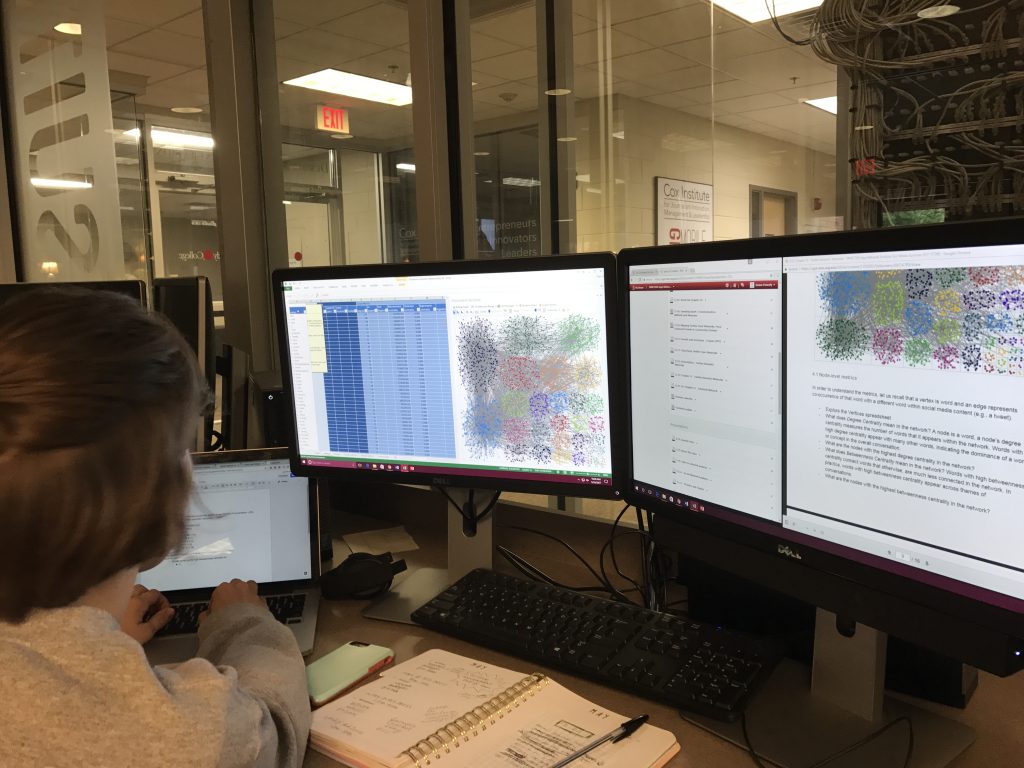
Publications
Himelboim, I., Borah, P., Ka Lai Lee, D., *Lee, J., Su, Y., Vishnevskaya, A., and Xiao, X. (2023). What do 5G networks, Bill Gates, Agenda 21, and QAnon have in common? Sources, engagement, and characteristics of COVID-19 Conspiracy Theories, New Media and Society. link Stafford, M., Himelboim, I., Walter, D. & Ophir, Y. (Accepted). The Evolution of the Advertising Discipline Through Four Decades A Machine Learning Scope Analysis of Themes, Topics and Methods. International Journal of Advertising. DOI: 10.1080/02650487.2022.2128005 Liu, K.-C., Ophir, Y., Walter, D., & Himelboim, I. (Accepted). Hashtag Activism in Politicized Pandemics: The #TaiwanCanHelp Campaign. Social Media & Society
Su, L. Y.-F., McKasy, M., Cacciatore, M. A., Yeo, S. K., DeGrauw, A., & Zhang, S. J. (2022). Generating science buzz: An examination of multidimensional engagement with humorous scientific messages on Twitter and Instagram. Science Communication, 44(1), 30-59. doi: 10.1177/10755470211063902
Himelboim, I., Xiao, X., Lee, D. K. L., Wang, M. Y., & Borah, P. (2020). A social networks approach to understanding vaccine conversations on Twitter: Network clusters, sentiment, and certainty in HPV social networks”. Health communication, 35(5), 607-615.
Cacciatore, M. A., Kim, S., & Danzy, D. (2019). Trouble at 30,000 feet: Twitter response to United Airlines’ PR crises. In K. K. Stephens (Ed.), New Media in Times of Crisis (pp. 106-125). New York: Routledge.
Himelboim, I., & Golan, G. J. (2019). A social networks approach to viral advertising: The role of primary, contextual, and low influencers. Social Media+ Society, 5(3), 2056305119847516.
Acosta-Alzuru, C. (2021) Will it travel? The Local vs. Global Tug-of-War for Telenovela and Turkish Dizi Producers. In Arda Ö, Aslan, P. & Mujica, C. (Eds.) Transnationalization of Turkish Television Series (pp. 1-26). Istanbul University Press.
Isa, D. & Himelboim, I. (2018). A Social Networks Approach to Online Social Movements: Social Mediators and Mediated Content in #FreeAJStaff Twitter Network. Social Media + Society, 4(1). DOI: 10.1177/2056305118760807
Lin, J.S. & Himelboim, I. (2019). Political Brand Communities as Social Network Clusters: Winning and Trailing Candidates in the GOP 2016 Primary Elections. Journal of Political Marketing, 18(1-2), 119-147. DOI: 10.1080/15377857.2018.1478661
Conference Papers
Cacciatore, M. A., (2022, February). Are you JOKING??? Humor in science communication research and practice. Research presentation as part of a panel at the annual convention of the American Association for the Advancement of Science (AAAS), Philadelphia, PA (online).
Kueichun Liu, A.K., Ophir, Y., Walter, D. & Himelboim, I. (2022). From Victimhood to Empowerment: An Experimental Evaluation of the Effects of Complex Framing Techniques to Increase Engagement with Online Hashtag Activism. Paper accepted for presentation at the annual conference of the Association for Education in Journalism and Mass Communication.
Himelboim. I. & Golan, G. (2022). Social Network approach to Social Media Influencers on Instagram: The Strength of being a Nano Influencer. Paper presented for presentation at the annual conference of the American Academy of Advertising. St. Petersburg, FL.
Liu, K.-C., Ophir, Y., Walter, D., & Himelboim, I. (2021, September). Hashtag Activism in Politicized Pandemics: The #TaiwanCanHelp Campaign. 2021 APSA Annual Conference, Seattle, WA, United States.
Himelboim, I., Borah, P., Ka Lai Lee, D., *Lee, J., Su, Y., Vishnevskaya, A., and Xiao, X. (2021, August). What do 5G networks, Bill Gates, Agenda 21, and QAnon have in common? Sources, engagement, and characteristics of COVID-19 Conspiracy Theories. Association for Education in Journalism and Mass Communication (Online). August 3-7.
Liu, A. K., Ophir, Y., Walter, D., & Himelboim, I. (2021, August). Networked Campaign and Hashtag Activism Diffusion During the #TaiwanCanHelp Hashtag Activism Campaign. Association for Education in Journalism and Mass Communication (Online). August 3-7.
Su, L. Y.-F., McKasy, M., Cacciatore, M. A., Yeo, S. K., DeGrauw, A., & Zhang, S. J. (2020, May). How attributes of humorous scientific messages predict engagement on Twitter and Instagram. Paper presentation at the annual convention of the International Communication Association (ICA), Gold Coast, Australia (virtual).
Yeo, S. K., Su, L. Y.-F., Cacciatore, M. A., McKasy, M., O’Neill, L., & Qian, S. (2019, September). How humor can help us communicate science. Paper presentation at the #InclusiveSciComm 2019 conference, Kingston, RI.
Isa, D., Lee, Q., Wang, M. Borah, P. & Himelboim, I. (August, 2018). Campaign Strategies on Twitter in 2016 U.S. Presidential Election: Real-time Event, Negativity, and Online Engagement. Presented at the annual Conference of the Association for Education in Journalism and Mass Communication, Washington, DC.
Wang, M., Borah, P. & Himelboim, I. (June, 2018). Spread of fake news on Twitter during the 2016 presidential election: The case of #pizzagate. Paper presented at the World Association for Public Opinion Research annual meeting. Marrakesh, Morocco. June 27-30.
Wang, M., Borah, P., Li, Q. & Himelboim, I. (May, 2018). Twitter strategies used during the 2016 U.S. presidential election: Donald Trump and Mike Pence vs. Hillary Clinton and Tim Kaine. Paper presented to the International Communication Association, Communication Technology Division.
